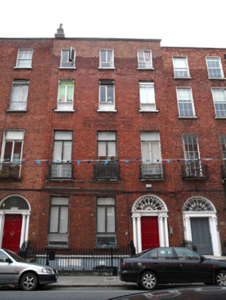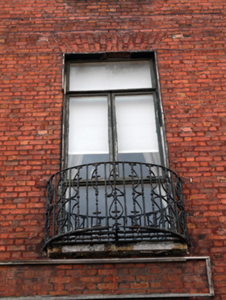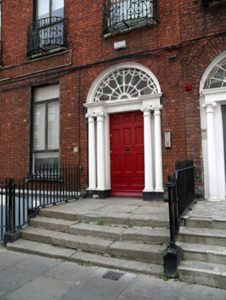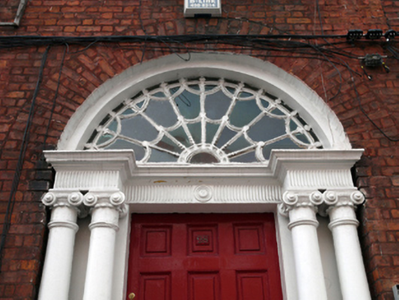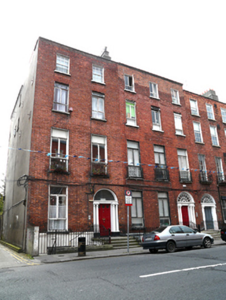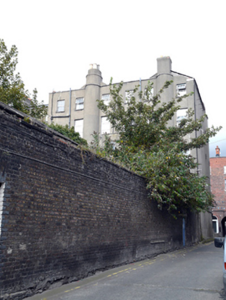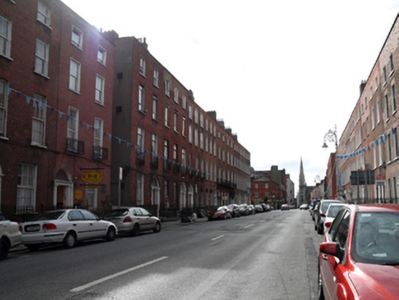Survey Data
Reg No
50010941
Rating
Regional
Categories of Special Interest
Architectural, Artistic, Technical
Original Use
House
In Use As
Apartment/flat (converted)
Date
1795 - 1800
Coordinates
315900, 235371
Date Recorded
25/09/2011
Date Updated
--/--/--
Description
Terraced three-bay four-storey house over exposed basement, built c.1798, as one of pair with No. 27. Now in multiple occupancy. Roof hidden behind rebuilt parapet wall with moulded granite coping, part gabled to rear. Shared rendered and stepped chimneystack to east party wall and round-plan rendered chimneystack abutting rear gable, all having clay pots. Handmade red brick walls laid in Flemish bond with early lime pointing, on painted granite plinth course over rendered basement. Rear elevation unpainted and rendered in cement. Gauged brick flat-arched window openings, painted granite sills, patent rendered reveals and replacement timber casement windows. Decorative wrought-iron balconettes to first floor and replacement uPVC windows to rear elevation. Gauged brick round-headed door opening with inset painted stone Ionic doorcase. Original timber door with eleven beaded flat panels, flanked by paired Ionic columns on plinth bases supporting stepped and fluted lintel cornice with original cobweb fanlight. Door opens onto granite platform and four granite steps bridging basement, enclosed by original wrought-iron railings. Basement area enclosed by original wrought-iron railings on moulded granite plinth wall with replacement iron gate and concrete steps to basement. Metal door below platform and further metal door to former basement window opening. Cast-iron coal hole cover set in granite slab to front pavement. Rendered wall and gate piers with granite coping and metal gate provide access to rear of property from Bath Lane.
Appraisal
Gardiner Place was laid out in 1792 as an extension of Gardiner's Row, connecting Parnell Square to Mountjoy Square. Built as one of a pair, this substantial Georgian townhouse, although it has lost its original windows, retains a wealth of original fabric including a very impressive doorcase, early lime pointing and its original ironmongery. Sharing many features with its neighbour, No. 27, the house has a curious circular chimneystack abutting the partially gabled rear elevation, and adds subtle variation in both detailing and proportions that give the street its architectural appeal.

